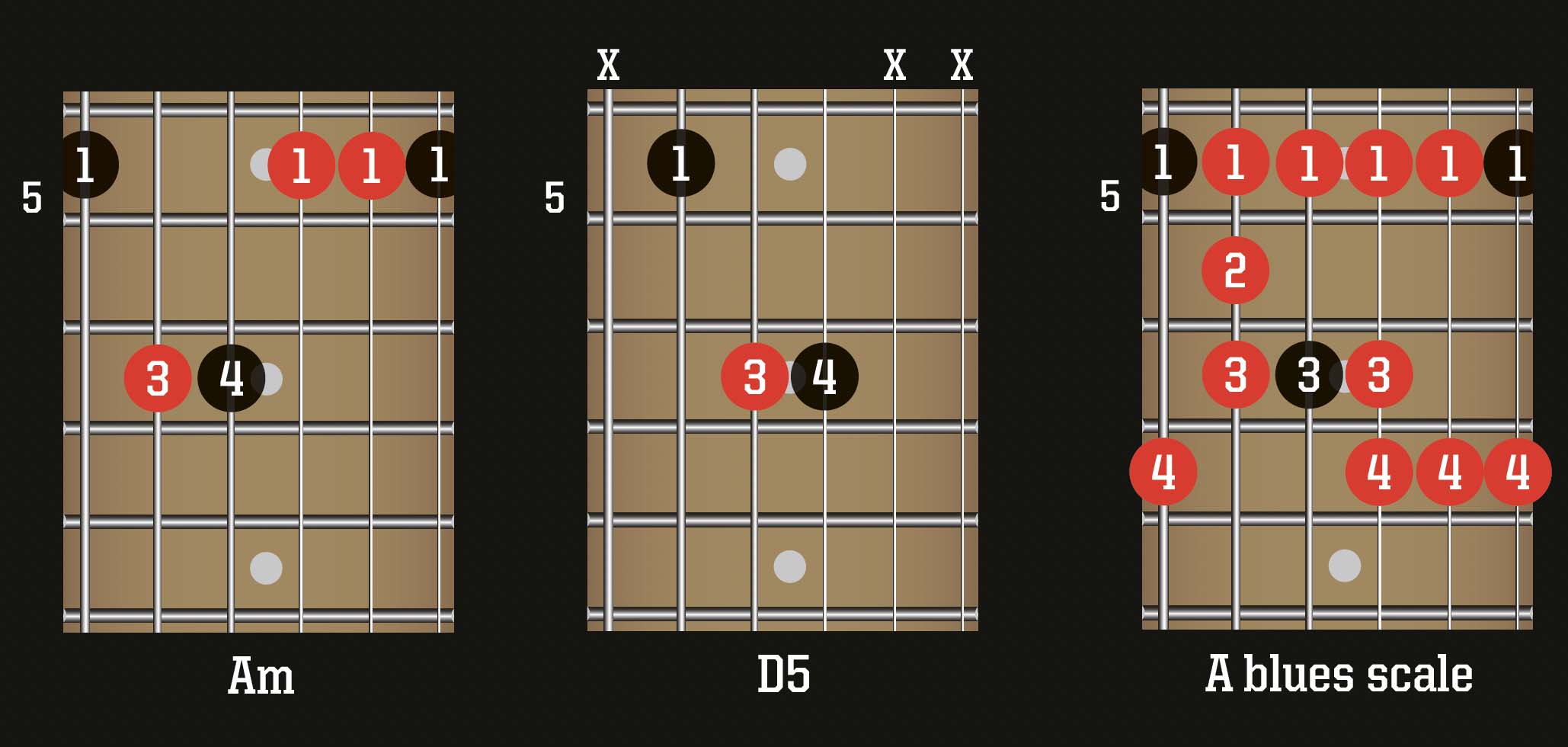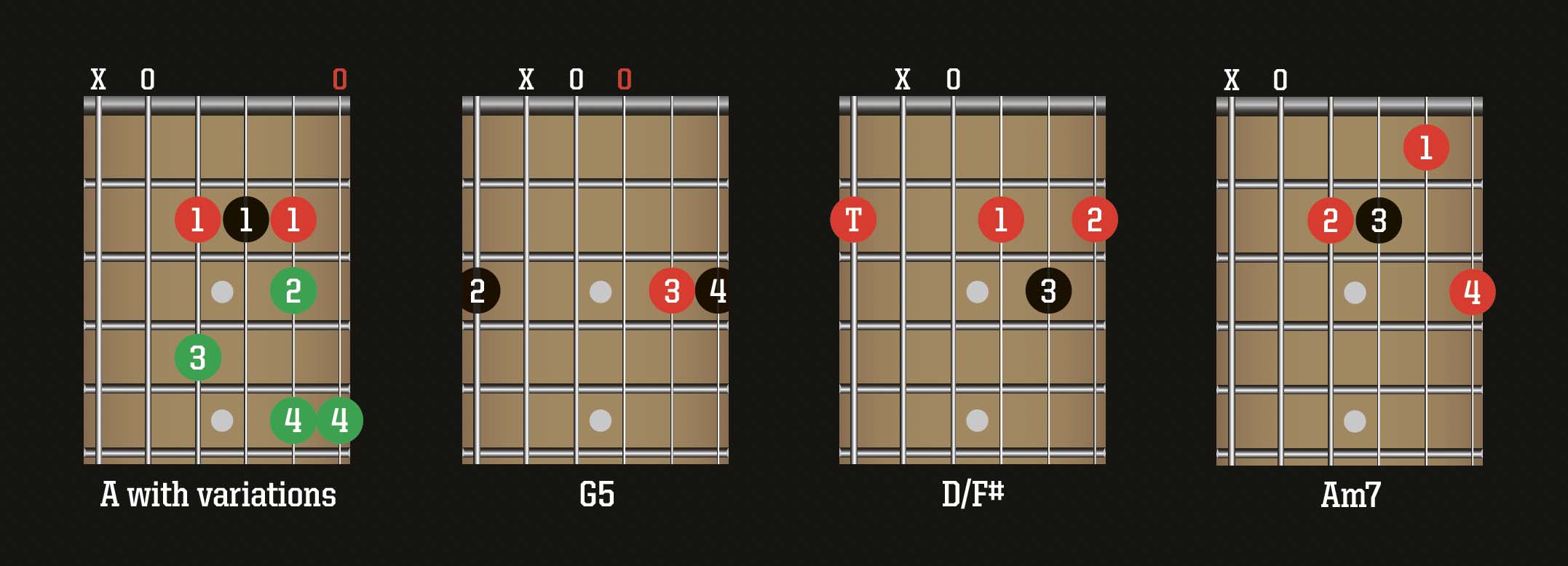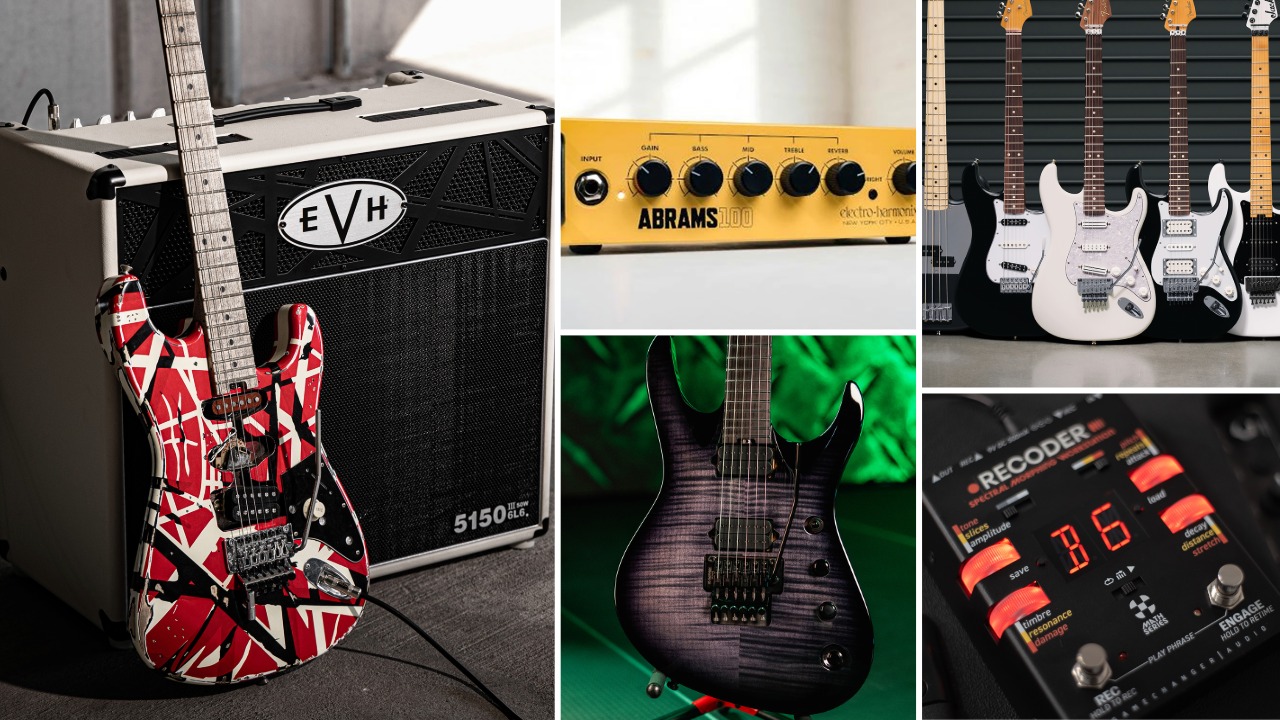5 ways to write a great guitar riff
How to incorporate the chords and composing tricks that built rock’s greatest riffs in your own writing

Our list of the 50 greatest guitar riffs reads like a who’s who of the history of rock, with classic acts hitting the heady heights of, well, pretty much the entire top 50 if we’re honest. Newer acts received far fewer votes by comparison.
Perhaps it’s just a matter of renown; it’s just harder for younger bands to be as well-known as acts who may have been around for 40 or 50 years. Here we’re looking how those classic riffs were written.
These aren’t exactly songwriting secrets. More, common themes and threads. Techniques and musical devices that can be recycled and reimagined when you write your own riffs. You get the idea, so let’s get started...
1. The Arpeggio Method
As Heard In: Ain't Talkin’ ’Bout Love, Sweet Home Alabama, Don’t Fear The Reaper, Message In A Bottle
Arpeggios feature highly in our top 50, and they’re a simple idea: just play a chord one note at a time. Try ’em with a clean sound (as heard in Lynyrd Skynyrd’s Sweet Home Alabama), or heavy things up with a higher gain tone (as on Van Halen’s Ain’t Talkin’ ’Bout Love). Palm-muting is a handy way to keep those ringing chord tones under control when you’re using distortion.
These shapes are classic fare. We’d say they’re pretty easy, but watch out for that Summers style sus2 stretch shape. Sus chords are oft-used in classic rock, so look to find new versions built around these other shapes.
Ex 1. Sweet Reaper
The idea here in our example arpeggio riff is to form the chord shapes with your fretting hand and use your pick to articulate the notes as directed. The notes should ring out together in a sonorous, piano-like effect.
All the latest guitar news, interviews, lessons, reviews, deals and more, direct to your inbox!
2. The Minor Pentatonic Method
As Heard In: Whole Lotta Love, Killing In The Name, Life In The Fast Lane
Guaranteed to rock, the E minor pentatonic scale allows you to make plentiful use of the guitar’s heaviest note – the bottom E! Of course, pentatonic riffs, unison bassline and heavy drum backbeat was a winning formula as far back as late '60s Cream and Led Zeppelin, but it’s still relevant today, with bands like Greta Van Fleet and Royal Blood making it their core creative approach.
We’ve mapped out the notes of the E minor pentatonic scale for you here. Only on the bass strings, of course! Riffs are in and widdle is out, remember, so keep it low and mean when you write your own riffs.
Ex 2. Whole Lotta Riff
Our idea here should give you a feel for some typical E minor pentatonic phrasing. The 3rd, 5th and 7th frets figure highly, as does the open sixth string. Also look out for those quarter-tone bends.
3. Open String Pedal Tones
As Heard In: Symphony Of Destruction, Walk, Angel Of Death, Enter Sandman, 2 Minutes to Midnight
The open E pedal note is a core thrash metal sound. Megadeth’s Dave Mustaine and Metallica’s James Hetfield were at the forefront of developing the '80s British heavy metal sound into new territory with more technicality and speed.
Slayer took the ideas to greater extremes and still today, the boundaries of heavy open-string riffs are being pushed, with bands like Meshuggah utilising eight-string guitars to allow for more open-string pedal note options and more adventurous sounds.
In music, a pedal is a note which is played repeatedly throughout a musical phrase and a lot of riffs rely on using the open E or A string as an anchor point, particularly in heavy metal. The Phrygian mode shown here will help you get in a metal mood.
Ex 3. Thrash It Out
In this example, we start with a Dimebag-meets-Dave Mustaine powerchord riff, followed by some Jeff Hanneman trills and finally some Iron Maiden-inspired scale sequences. All typical riff tricks found in our top 50.
4. Blues Scale Method
As Heard In: Purple Haze, Layla, Johnny B. Goode, La Grange
The blues scale is the basis of classic riffs like Purple Haze, Scuttle Buttin’ and Johnny B. Goode, which are all examples of melodic riffs. This one scale shape seems to contain an endless supply of riff ideas.
In classic rock and blues, riffs are often based around the I and IV chord change - Am to D5 in the key of A for example. Both of these chords can be found within the A blues scale and it is helpful to view them as one and the same.
Look at the blues scale shape shown here. You can trace Am and D5 chords within it and indeed many more; try creating your own chord shapes from the scale and using the shape to write riffs which you can combine with them.
Ex 4. Purply Blues
In this example, we start with a Hendrix-inspired string-bending lick, followed by some Billy Gibbons La Grange doublestops. After repeating the opening lick, we change the to IV chord (D5), then finish with a flurry of notes a la Clapton or Stevie Ray Vaughan. All played within the confines of the A blues scale.
5. Rhythmic Chords
As Heard In: Smoke on the Water, All Right Now, (I Can't Get No) Satisfaction, No One Knows, Crazy Train
The rhythm of a riff can be just as, if not more important than the chords themselves. Try clapping the rhythm of Smoke On The Water, Back In Black or You Really Got Me and the chances are people will know the song without any melodic information. Combining a strong rhythm, with some rocking chords is a recipe for an effective riff.
Here we have four chords which act as the basis for our example riff. Blast them out for straight ahead rock or experiment with adapting the shapes by moving one or two fingers around. This works particularly well with the open A. We’ve shown some variations in green.
Strummer Lovin'
This riff starts in A, and uses some variations on the open A shape, before using some Angus Young-inspired changes G to D/F#. In bar 3 we switch to A minor with some Josh Homme-style chords and finally we have some Rolling Stones-style triads, played on the treble strings.
Total Guitar is one of Europe's biggest guitar magazines. With lessons to suit players of all levels, TG's world-class tuition is friendly, accessible and jargon-free, whether you want to brush up on your technique or improve your music theory knowledge. We also talk to the biggest names in the world of guitar – from interviews with all-time greats like Brian May and Eddie Van Halen to our behind the scenes Rig Tour features, we get you up close with the guitarists that matter to you.











